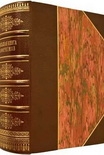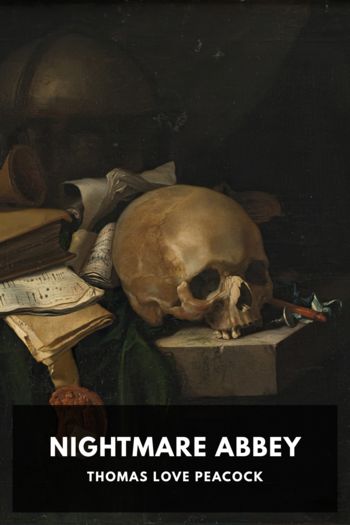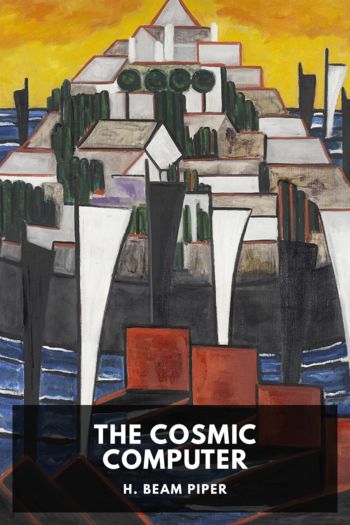Gluck, Diana Souhami [good novels to read in english txt] 📗

- Author: Diana Souhami
Book online «Gluck, Diana Souhami [good novels to read in english txt] 📗». Author Diana Souhami
Constance worked for Royalty, the aristocracy and the merely rich. It was a time of surface formality when daughters ‘came out’ into society with lavish dances and parties, weddings were for the most part once-in-a-lifetime affairs and plenty of women spent five or ten pounds a week on flowers for the house. Sir Francis and Lady Oppenheimer were friends and clients. They bought Gluck’s pictures and their daughter Betsan was sufficiently impressed by Gluck’s white sailcloth trousers to get a pair for herself.
Molly Mount Temple was the grandest and most outrageous of Gluck’s new connections. She was stepmother to Edwina, Countess of Burma, and she lived in Broadlands, the Mountbatten home in Romsey in Hampshire. She would phone Constance’s shop in the morning and order flowers for the dinner table to harmonize with what she intended to wear that night. She was said to be the first woman in London to paint her nails red. Her husband, Wilfrid Ashley, was the first baron, Chairman of the Anti-Socialist League, and Under-Secretary of State for War in 1923. Molly Mount Temple’s town house, Gayfere House in Westminster, designed by Oliver Hill, was an extravagant example of high thirties style. In the bathroom, grey mirror-glass walls reflected a collection of blue opaline glass and vases of white madonna lilies. The floor was black marble, the bath and wash-basin gold, the taps Lalique motor car mascots. The entrance hall to the house had a circular staircase of alternate black and white marble steps. Porcelain cats guarded the door and T’ang figures of demons sat on the radiator cases. The onyx dining table was lit from beneath and drapes of rubberized white material festooned the dining-room walls to deaden noise. Molly Mount Temple had a gavel to bang on the table when her guests got too noisy. Soon Gluck was at the dinner parties too and accepting commissions to paint Broadlands and a portrait of Molly. The Meteor lent her daughter her Rolls Royce and chauffeur so that on her first visit to Broadlands, in October 1932, Gluck arrived in style.
Broadlands, the Palladian mansion which had once housed Palmerston, now boasted a polo practice-ground, a golf-course, three tennis courts, eight hundred acres of shooting and room for twenty guests or so. Gluck chose to paint the portico and the sweep of a lawn. She gives a sense of a great deal of private land beyond. Constance described visiting Broadlands in 1932 with Gluck. When asked by Molly Mount Temple to do the flowers for the dinner table, she was uncertain how to match the splendour of the house:
Fortunately [Gluck] … brought to the matter a technically unbiased mind, her eye was arrested only by what she regarded as intrinsically beautiful … I got a lesson not only in flower decoration but in the emphatic necessity of keeping a mind clear of prejudice or fixed ideas.
Red cabbage leaves were the first contribution, followed by curly kale leaves, but only those which had turned slightly towards a yellowy green. These were arranged in two frills round a large shallow copper pan. Then came velvety begonia leaves, again arranged formally and a ring of white scabious. After that a mound of every lovely colour: verbenas, Phlox decussata, salvia, Bougainvillaea, zinnias, pale flame geraniums, gloxinias, purple carnations and dahlias, mauve, yellow and peach coloured. In the centre were yellow and orange African marigolds, and arranged at intervals the head of the amethyst thistle.… It was really exciting, a thrill of colour, satisfying and lovely to a degree. It took a long time, because it involved lengthy and pleasant discussion about the shape and colour of every flower, but it was a great lesson.7
At the dinner party Gluck first met Nesta Obermer, a society woman of charm and style and the second wife of an elderly, wealthy American, Seymour Obermer, whose play Pigeon Post had thrilled Gluck when she saw it with her parents in 1918.
The clients for whom Constance arranged flowers began to commission flower pictures from Gluck. Lord Vernon, who lived in Sudbury Hall, Derby and according to Who’s Who owned about 3500 acres of the surrounding land, commissioned a painting of lilies as an intrinsic part of the design of his new London home, Vernon House in Carlyle Square. ‘This house in Chelsea, designed by Mr Oliver Hill for Lord Vernon, is a perfect example of the small luxury house that is so much liked to-day,’ wrote The Lady, 2 June 1938. Gluck’s flower piece, in a frame designed and patented by her, was the sole picture in the drawing room. The walls and the picture frame were in weathered sycamore, the floor in walnut, the upholstery in ivory satin and carefully chosen pieces of Blanc de chine porcelain adorned the wall niches. The green of the lily leaves in Gluck’s painting was exactly repeated in the green marble inlay round the fireplace. Lord Vernon paid sixty guineas for the picture and described it as ‘the making of the room’.8
A similar painting of arum lilies followed for Bob Lebus, whose family fortune came from Ercol furniture. He used to go on holiday with Constance and Gluck to Tunisia. Though Gluck felt herself to be in some fundamental way aloof from society, these pictures, for the expensive walls of expensive people, are among her best. Some of their effect (as with Georgia O’Keefe’s paintings of flowers) is sexual. Gluck painted the orifices and protuberances of orchids and lilies and while painting described herself as being like a bee – ‘penetrating them for their sweetness’.9 She did a painting, now in the Art Gallery, Brighton, of one of Constance’s favourite plants, the Datura – blooms of unlikely and sinister delicacy on gnarled, twigged stems. The arrangements Gluck painted appeared in Constance’s books and





Comments (0)